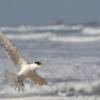-
Posts
9,502 -
Joined
-
Last visited
Content Type
Profiles
Forums
Gallery
Events
Everything posted by Jim Lad
-
Very nice progress, Keith. It looks like the rubbing strip isn't a rubbing strip but just some fancy decoration. John
-
Thanks Steven and Danny. I hope you also noticed 'Stag' and 'Frances Pritt' on the shelf, Danny! John
-
I've been a bit slack with updates, I'm afraid, but there's a little more progress to show. 'Meteor' is now sporting a keelson and a pair of stringers on each side of the hull. These will all now have to be dowelled and properly cleaned up as they will be visible on the completed model if I go ahead with my current plan to only partially plank the hull. Once that's done I can think about completing the stern framing and giving the outside of the hull some final fairing up before I start to think about planking. John
-
Another reason for plenty of Carley floats, Dan - how many of those soldiers couldn't swim? John
- 238 replies
-
- leviathan
- troop ship
-
(and 2 more)
Tagged with:
-
This will make a very nice model, Heinrich. Something very different to the usual whaler we see. John
-
Very nice work on that forward deck, Dan. She looks really good. John
- 238 replies
-
- leviathan
- troop ship
-
(and 2 more)
Tagged with:
-
Hello Mac, and a warm welcome to the forum from 'Down Under'. John
-
That looks a really nice slab for the base, Mark. I think I'd be inclined to leave the remainder of the bark on - more contrast with the beautiful finish of your model. John
-
Hello Jim, and another warm welcome to the forum from 'Down Under'. John
-
Hello Edward, and a warm welcome to MSW from 'Down Under'. John
-
Hello Peter, and another warm welcome to the forum from 'Down Under'. John
-
Hello Tony, and a warm welcome to the forum from 'Down Under'. John
-
Thanks for looking in, Druxey and Vaddoc. The model makers bench has been a very popular exhibit at the museum for many years - I'm not sure just how long, but certainly since prior to 1999. John
-
Thanks, Gary. As predicted, I got virtually nothing done today as there were crowds of people in the museum. John
-
Thanks, Pat, but the whole reason for us being there is to interact with visitors. When they re-worked our modelling space a few years ago the museum offered us a glass partition, but we refused as there would be no real point in being there if we couldn't talk to people. John
-
Congratulations on the completion of your beautiful model, Frank. I, too, am looking forward to the addition of the dredges. John
About us
Modelshipworld - Advancing Ship Modeling through Research
SSL Secured
Your security is important for us so this Website is SSL-Secured
NRG Mailing Address
Nautical Research Guild
237 South Lincoln Street
Westmont IL, 60559-1917
Model Ship World ® and the MSW logo are Registered Trademarks, and belong to the Nautical Research Guild (United States Patent and Trademark Office: No. 6,929,264 & No. 6,929,274, registered Dec. 20, 2022)
Helpful Links
About the NRG
If you enjoy building ship models that are historically accurate as well as beautiful, then The Nautical Research Guild (NRG) is just right for you.
The Guild is a non-profit educational organization whose mission is to “Advance Ship Modeling Through Research”. We provide support to our members in their efforts to raise the quality of their model ships.
The Nautical Research Guild has published our world-renowned quarterly magazine, The Nautical Research Journal, since 1955. The pages of the Journal are full of articles by accomplished ship modelers who show you how they create those exquisite details on their models, and by maritime historians who show you the correct details to build. The Journal is available in both print and digital editions. Go to the NRG web site (www.thenrg.org) to download a complimentary digital copy of the Journal. The NRG also publishes plan sets, books and compilations of back issues of the Journal and the former Ships in Scale and Model Ship Builder magazines.



